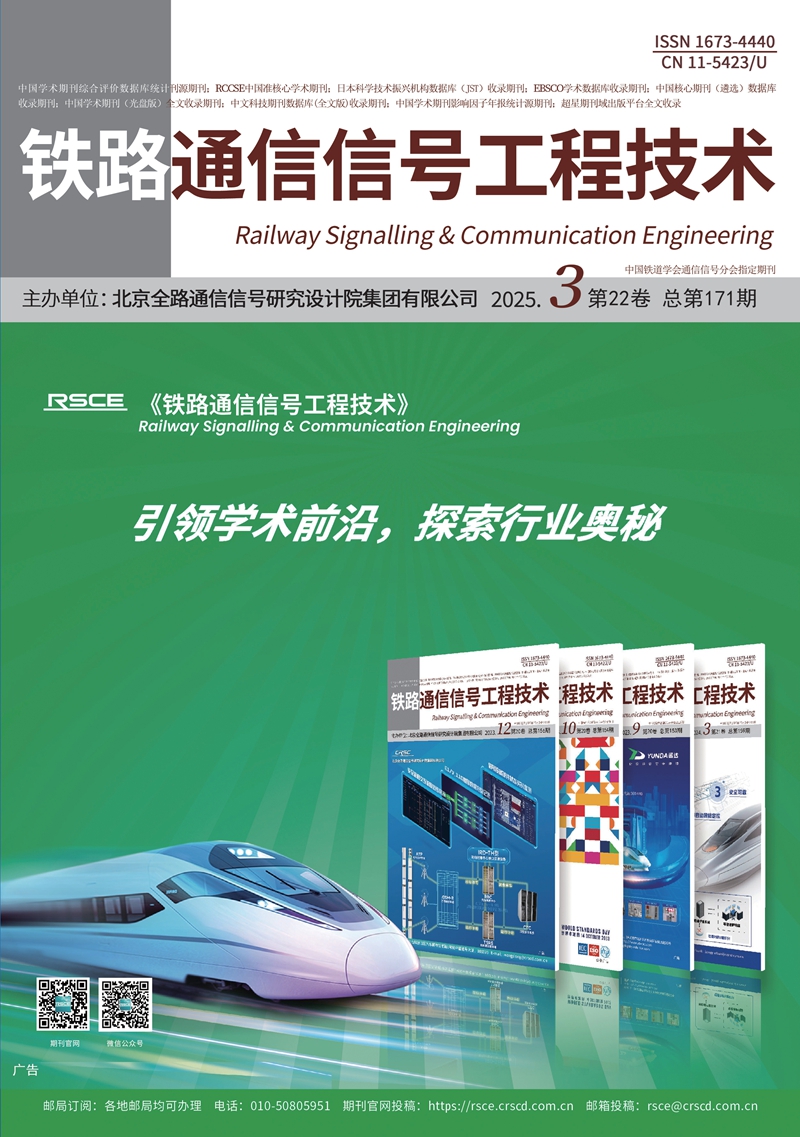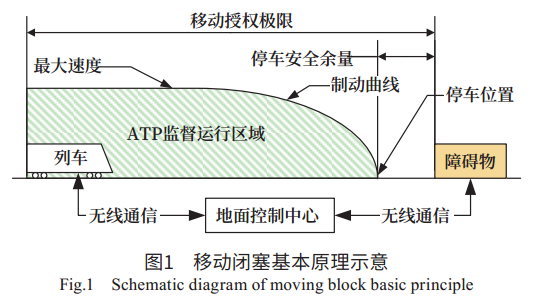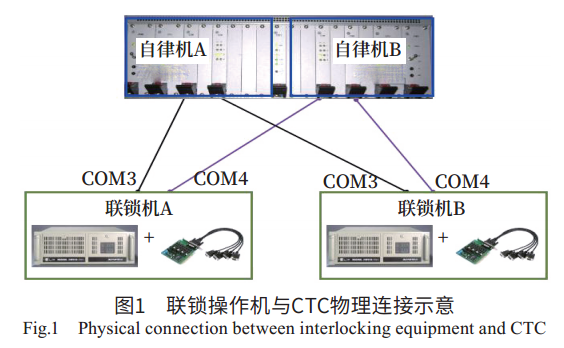Welcome to Railway Signalling & Communication Engineering,
Today is
中文
Current Issue
-
Decomposition of Train Tracking Interval and Its Impact Analysis
-
Jiang Ming, Zhang Wanqiang, Zhang Jiayang
-
2023 Vol. 20 (7):
1-9.
DOI:10.3969/j.issn.1673-4440.2023.07.001
-
Abstract (
)
PDF
(4617KB)(
)
-
The composition of train tracking interval is analyzed in depth with comprehensively considering of various influencing factors, including train performance, line conditions, signal system, transportation operation. Train tracking interval is accordingly decomposed into train performance operation time, additional operation time under line conditions, additional operation time under signal system and other additional operation time. Definitions of each operation time and its contribution rate to train tracking interval are proposed. Taking CR400BF EMU and its operation parameters as an example, the contribution rate of each operation time to each train tracking interval is calculated using simulation calculation software, under the combination conditions of different operation speeds, different gradients and different block section lengths. The influence of each factor and its combination on train tracking interval is quantitatively analyzed. Conclusion: For train interval tracking time and train passing tracking interval, the leading factor is signal system when the operation speed is low, and the leading factor is train performance when the operation speed is high. For departure tracking interval and arrival tracking interval, the leading factor is line conditions.
-
-
Research on CTCS-4 New Train Control System Combined with Intermittent Backup Mode
-
Xu Gaozhen
-
2023 Vol. 20 (7):
10-15,23.
DOI:10.3969/j.issn.1673-4440.2023.07.002
-
Abstract (
)
PDF
(2574KB)(
)
-
This paper first introduces the basic principle of moving block, analyzes the main fault scenarios of the new train control system and the fault handling method in the backup mode of inter-station block, and points out the existing problems. Then, referring to the intermittent ATP backup mode of CBTC, according to the concept of "fail-safe-operation", the CTCS-4 new train control system structure integrating intermittent backup mode is innovatively proposed. Finally, the working principle of the intermittent backup mode and the operation mode under various fault scenarios are analyzed by local modeling.
-
-
Research on Technology of Suburban Railway Train Control System Based on CTCS2+ATO
-
Wu Peidong
-
2023 Vol. 20 (7):
16-23.
DOI:10.3969/j.issn.1673-4440.2023.07.003
-
Abstract (
)
PDF
(1199KB)(
)
-
The paper briefly introduces the function and structure of CTCS+ATO train control system, analyzes and proposes the optimization items to be carried out for the application of CTCS2+ATO train control system in suburban railway train control system. Reducing the tracking interval time, shortening the effective length of the arrival and departure track, supporting "four networks integration", and supporting multi-mode Train-to-Wayside Communication(TWC) are analyzed and discussed respectively. Further, combining with the existing research results, some recommendations and solutions are proposed.
-
-
Design of Coding Circuit in Special Scenario
-
Bing Rui, Ma Wenhui
-
2023 Vol. 20 (7):
24-28.
DOI:10.3969/j.issn.1673-4440.2023.07.004
-
Abstract (
)
PDF
(1201KB)(
)
-
In the process of transformation of Taiyuan North Railway Station terminal, there is no turnout section on the train receiving route, and the train directly enters the track after crossing the protective route signal. When the protective signal mutates for some reason, the train enters the track after overrunning the protective signal and receives the wrong low frequency signal. This paper mainly studies the reason why the train mistakenly receives low frequency signal after overrunning. By discussing the functions of the conventional circuit and the common simplified circuit of the conventional station, this paper analyzes the work flow of the station after overrunning, and summarizes the reasons for the failure to send the forbidden code and the failure to cut off the code channel. In view of the reasons, this paper puts forward two feasible ideas of optimizing JMJ relay's energized circuit and optimizing station type to solve the problem, and the two ideas are respectively further designed for verification. According to the actual field situation, the optimization of JMJ relay energized circuit method is recommended for field implementation.
-
-
Research on Notification Field Scheme Based on GSM-R
-
Chen Jianxin
-
2023 Vol. 20 (7):
40-43,48.
DOI:10.3969/j.issn.1673-4440.2023.07.007
-
Abstract (
)
PDF
(1168KB)(
)
-
This paper researches and analyzes the operation content and contact methods of station duty personnel and field duty personnel, and designs a GSM-R based notification field service solution by combining the current situation of train operation equipment. This solution proposes the concept of automatic notification to field duty personnel by referring to the design concept of wireless route prediction application technology in the CTC system, and studies the timing and conditions of automatic notification to field duty personnel. Portable wireless handheld terminals with human-computer interaction for field duty personnel are set. Difficult implementation and poor application effect of the current notification field function are solved by using the existing GSM-R wireless communication channel to interact information so as to improve the management technology and automation level of train service personnel's receiving and departure operations again.
-
-
Research on Structure of Railway Intelligent Communication Network
-
Deng Yefei
-
2023 Vol. 20 (7):
44-48.
DOI:10.3969/j.issn.1673-4440.2023.07.008
-
Abstract (
)
PDF
(1035KB)(
)
-
Combined with the existing railway communication system architecture, the development trend of the next generation railway communication network is expounded. This paper puts forward the intelligent vision of railway communication network, points out that the railway communication network will evolve to the direction of ubiquitous interconnection, cloud network collaboration and DOICT technology deep integration. This paper analyzes the emerging technologies and technical systems represented by cloud computing, software defined network (SDN) and artificial intelligence (AI), and puts forward suggestions on ICT technology architecture suitable for railway communication network, which is of guiding significance for the evolution direction and overall architecture of the next generation railway communication system.
-
-
Research on New 5G-based Railway Tunnel Disaster Prevention and Rescue Monitoring System
-
Li Minxuan, Zhao Yao, Wu Shaohua, Zhou Min
-
2023 Vol. 20 (7):
49-54,58.
DOI:10.3969/j.issn.1673-4440.2023.07.009
-
Abstract (
)
PDF
(1841KB)(
)
-
Aiming at the problems of inflexible wired networking, limited monitoring capabilities, and insufficient linkage functions of the current railway tunnel disaster prevention and rescue monitoring system, combined with the advantages of 5G technology and its application prospects in railways, this paper proposes a new 5G-based scheme system. Its compatibility considering the two carrying modes of railway 5G private network and public network, the compatibility system architecture of the two is designed, and the system deployment scheme of the two is analyzed. This system has the ability of flexible networking, expansion and upgrading, and the integration of cutting-edge technical, which means that it is able to realize functions such as early warning and alarm, linkage control, one-key rescue, simulation presentation and so on, so as to realize intelligent operation and maintenance management, additionally to improve the ability of railway tunnel disaster prevention and rescue.
-
-
Analysis of Registration of CIR Function Number
-
Wang Rui
-
2023 Vol. 20 (7):
55-58.
DOI:10.3969/j.issn.1673-4440.2023.07.010
-
Abstract (
)
PDF
(966KB)(
)
-
Based on the principle of CIR function number registration, through viewing CIR data, accessing wireless network management information, and on-site wireless network environment testing, etc., this paper analyzes the causes of 5 function number registration failure cases encountered in routine maintenance, and gives the solution to prevent users such as stations and dispatchers from being unable to communicate with the train driver in time due to the failure of function number registration, so as to ensure the normal GSM-R voice service.
-
-
Implementation Scheme for Adjusting Cross Line Operation Diagram of Interconnected Lines
-
Cao Lizhu, He Fujun, Liu Jia
-
2023 Vol. 20 (7):
59-63.
DOI:10.3969/j.issn.1673-4440.2023.07.011
-
Abstract (
)
PDF
(1238KB)(
)
-
In the context of interconnected and cross line operation of urban rail transit, the adjustment of single line operation diagram can no longer meet the actual operational needs. This paper proposes a cross line operation diagram adjustment scheme for interconnected lines. This scheme points out that the core of interconnection and cross line adjustment is the adjustment of the "local+adjacent line" train diagram based on the operating line (train) as a unit; it designs a reasonable transmission carrier from the local line to adjacent lines to complete the interaction between the local line and adjacent lines, and proposes train diagram standards and designs a cross line train diagram adjustment process.The scheme can solve the problem of cross line operation diagram adjustment and improve operational efficiency.
-
-
Analysis and Optimization of Electromagnetic Interference of Medium-low Speed Maglev BTM Equipment
-
Luo Lingfeng, Cao Hefei
-
2023 Vol. 20 (7):
64-69.
DOI:10.3969/j.issn.1673-4440.2023.07.012
-
Abstract (
)
PDF
(2196KB)(
)
-
The electromagnetic environment of medium-low speed maglev railway is complex, and the on-board BTM equipment is extremely vulnerable to electromagnetic interference, which affects the normal operation of train control system. Based on the Fenghuang Maglev project, this paper collectes in detail the faults occurred during the commissioning of the on-board BTM and the field electromagnetic environment test records of maglev train under various working conditions. Through comparative analysis, the main sources and coupling paths of electromagnetic interference are determined, and a series of measures to suppress the electromagnetic interference conduction of BTM equipment are formulated according to the electromagnetic interference conduction path. The test results show that these measures can effectively restrain electromagnetic interference from conducting on BTM equipment, and improve the adaptability of BTM equipment to electromagnetic environment. The research methods adopted in this paper and the preventive measures against electromagnetic interference of BTM equipment provide a reference for solving electromagnetic interference of on-board BTM equipment, and also accumulate valuable experience for the subsequent construction and operation of medium-low speed maglev railway.
-
-
Research on Redundancy Strategy of Dual Speed Sensors
-
Jiang Kun, Yang Difei
-
2023 Vol. 20 (7):
70-74.
DOI:10.3969/j.issn.1673-4440.2023.07.013
-
Abstract (
)
PDF
(1222KB)(
)
-
This paper proposes a redundant speed-distance measurement method for dual-speed-sensors trains, and the corresponding devices, electronic equipment and storage media are included. This method first obtains the pulse measurement data of odometer 1 and odometer 2 at the current moment to determine the cumulative pulse error; Then based on the pulse measurement data of odometer 2 at the current moment, the cumulative pulse error, and the instantaneous pulse error, the pulse measurement data of odometer 1 at the current moment is corrected; Finally, through the results of mutual correction of the two sensors, the distance and speed of the train at the current moment are determined. The method provided in this paper solves the problem of inaccurate measurement when a single speed sensor fails, and ensures that the distance output value of the speed sensor does not jump when it recovers from the fault, which improves the accuracy of train speed measurement and distance measurement.
-
-
Discussion on Heterogeneous Integration in Centralized Traffic Control System for Suburban Railway
-
Yang Li, Hu Guangxiang, Lin Qiang, Luo Zhigang
-
2023 Vol. 20 (7):
75-79.
DOI:10.3969/j.issn.1673-4440.2023.07.014
-
Abstract (
)
PDF
(1418KB)(
)
-
In order to solve the heterogeneous integration problem that the central and station subsystems of the centralized traffic control system of suburban railway cannot be fully interconnected, starting from the development history of centralized traffic control system, the implementation scheme of multiple existing equipment accessing the same dispatching center, as well as the existing Centralized traffic control architecture and communication protocol are analyzed, Propose two solutions for heterogeneous integration using unified communication protocols or interfaces. The proposed solution in this article can effectively avoid being constrained by the products of a single manufacturer and save construction costs, achieving flexible adjustment of the jurisdiction of the dispatch station.
-
-
Design and Implementation of Rail Signal Interface Protocol Parser Based on Wireshark
-
Dong Qujiang, Lu Zhiwei, Zeng Qingwen, Liu Chen
-
2023 Vol. 20 (7):
80-86.
DOI:10.3969/j.issn.1673-4440.2023.07.015
-
Abstract (
)
PDF
(1363KB)(
)
-
Wireshark has been widely used in network packet capture and protocol parse. Based on the analysis of the RSSP-I protocol and TCC external interface application data, this paper uses the Lua scripts to implement a configurable interface protocol heuristic parser based on Wireshark. It can be used to parse many protocols synchronously, including RSSP-I and RSSP-II, as well as several interface application data. The test result shows that the parser has good scalability and usability, and it is useful for engineering designers of interlocking and train control systems.
-
-
Research on Speed Sensor Detection Method Based on Fault Tree
-
Huang Yuhua, Jin Jie
-
2023 Vol. 20 (7):
87-91.
DOI:10.3969/j.issn.1673-4440.2023.07.016
-
Abstract (
)
PDF
(2071KB)(
)
-
Speed sensor is an important external equipment of on-board signal subsystem. In order to accurately locate the fault of speed sensor, this paper proposes and designs a speed sensor detection method and detection scheme based on fault tree. Taking the speed sensor fault of Shanghai Rail Transit Line 8 as an example, this paper uses Fault Tree Analysis (FTA) to accurately locate the cause of the speed sensor fault due to the auxiliary inverter, and designs a shielding method to ensure that the speed sensor is not disturbed and ensure the normal operation of the speed sensor.
-
-
Fault Analysis and Solution of Tackside Signal Devices Caused by Lightning Strike
-
Li Xue
-
2023 Vol. 20 (7):
98-103.
DOI:10.3969/j.issn.1673-4440.2023.07.018
-
Abstract (
)
PDF
(3849KB)(
)
-
After lightning strikes the overhead contact line or the support frame of the overhead contact line, signal devices installed nearby and signal cables laid may be damaged or broken down. In order to study the fault causes of signal devices caused by lightning overvoltage and power frequency overvoltage, the potential rise generated by lightning current and power frequency current at the entry point is calculated. It is found that when the amplitude of lightning current connected to the scattered grounded OCS pole exceeds 10 kA, the ground potential rise generated at the entry point is much larger than the impulse withstand voltage of signal cable, and can also be transmitted to the rail surface through the rail to the ground leakage impedance, resulting in the failure of the signal devices connected to the rail. Optimization measures are proposed for the signal equipment and signal cable near the OCS pole in scattered grounding mode, including outer armored grounding, enhanced insulation laying, SPD setting optimization, insulation resistance testing and other aspects, and suggestions are provided for lightning damage analysis and fault handling in similar scenarios.
-
-
Case Analysis of Abnormal Communication Between Computer-based Interlocking and CTC
-
Dai Mingfu
-
2023 Vol. 20 (7):
110-114.
DOI:10.3969/j.issn.1673-4440.2023.07.020
-
Abstract (
)
PDF
(3331KB)(
)
-
As the key equipment of signal system, the communication stability between computer-based interlocking(CBI) and CTC interface is an important guarantee for traffic safety and transportation efficiency improvement. When the communication between CTC and CBI system is interrupted, the field operation will be greatly affected. This paper analyzes the fault of a station caused by the abnormal communication between the CBI system and CTC, which leads to the loss of the interface of the station and yard of the vehicle terminal, and puts forward the corresponding solutions. The field implementation results are good. The relevant solutions improve the stability of the communication between the interlocking system and CTC, and ensure the safe operation of the field equipment. At the same time, it can also provide reference for other stations to deal with similar faults.
-

-
月刊
Monthly
-
第22卷 第3期 总第期
-
Vol.22 No.3 S.No.
-
出版:
2025-03-21
-
Published on:
-
创刊:2004 年
-
First Issue: 2004

07-0001-09_pic.png)



















